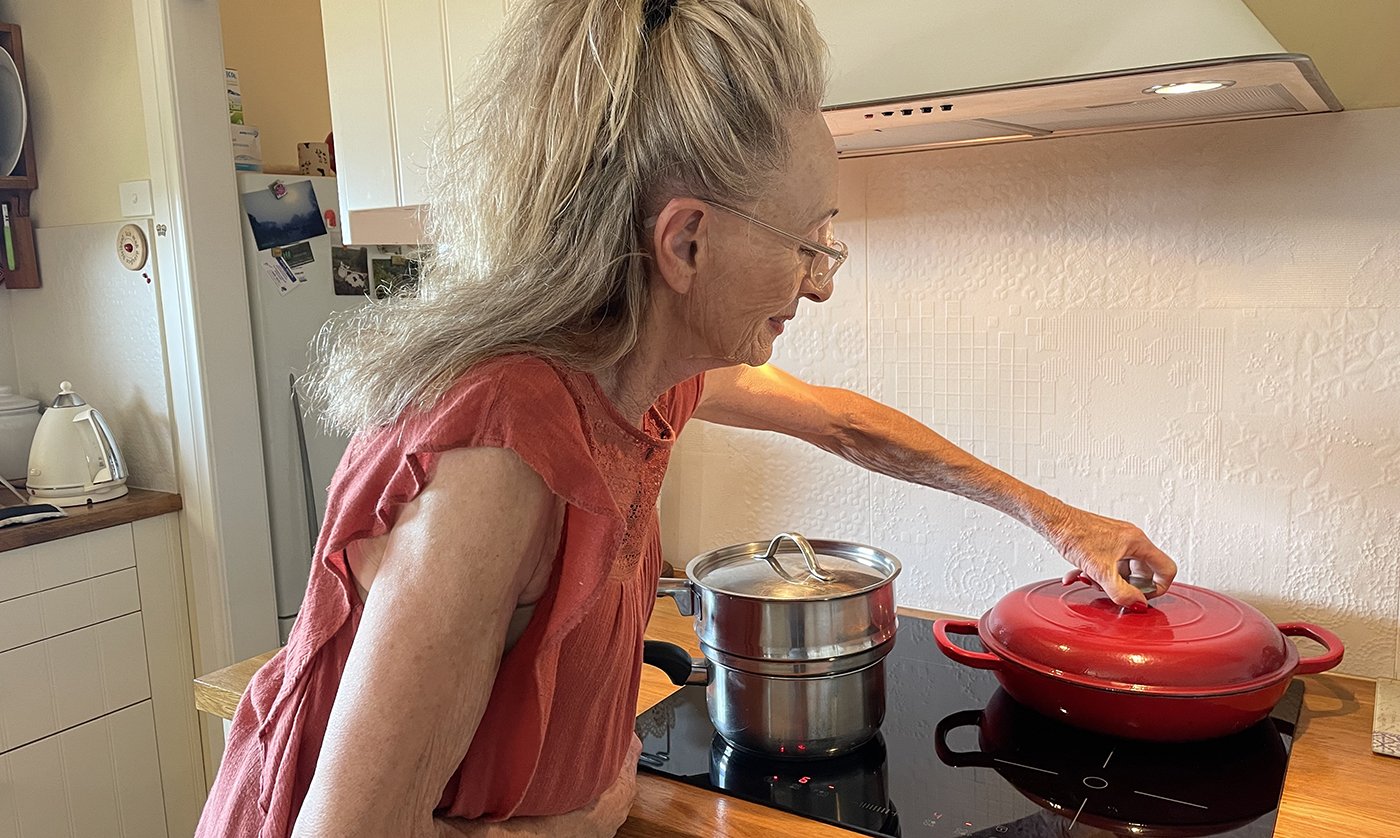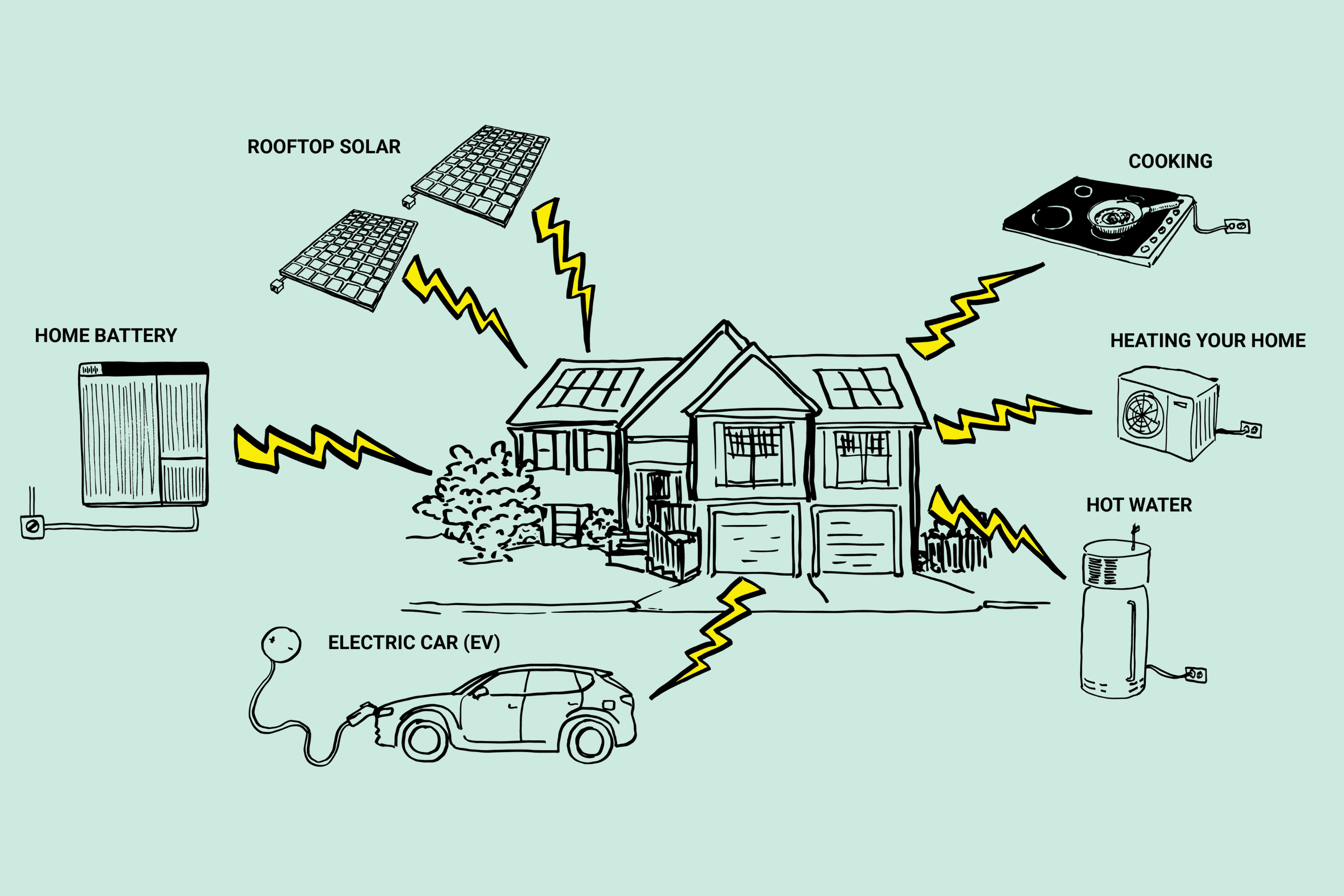Electrify everything!
Austinmer local / scientist / big thinker / energy guru Dr Saul Griffith has been touring the country promoting his ideas of electrification. It means transforming our houses, cars and suburbs so they run more efficiently and are powered by the sun.
Saul and his team at Rewiring Australia have laid out a detailed blueprint which shows that switching to an electric future is not mere optimism, but is feasible and achievable now. And they’re setting out to prove it. Electrify 2515 has partnered with Rewiring Australia to apply for funding to try create Australia’s first all electric suburb here in 2515.
Six things to electrify:
-

Rooftop solar
Solar panels mean your home can generate its own power. Rooftop solar electricity is about five times cheaper than grid prices.
View our Solar Rollout -

Hot water
Heat pumps are the most efficient way to heat water for bathing, washing up, etc. Heat pumps use around a quarter of the energy required by conventional hot water systems.
View our Hot Water Guide -

Heating
Typical reverse-cycle air conditioners are the most efficient way to heat your home, using just 25-30% of the energy required by conventional gas or electric systems.
-

Cooking
Induction cooking uses around half the energy required by fossil fuel methods. Not only is electric cooking cheaper, it also saves your household from harmful gas stove pollutants known to cause respiratory illness.
-

A home battery
Solar panels can charge up a home battery while the sun shines. Then the battery can help power your home through the evening. (You're still connected to the grid for cloudy days when you need more energy.)
-

An Electric Vehicle (EV)
Electric Vehicles are the most efficient cars. EVs convert more than 77% of electrical energy into power. Petrol vehicles convert only 12-30% of petrol energy into power.
Ready to get started?
View the Household Electrification Guide
A world-first pilot program
The world is moving fast towards a clean energy economy - and many of us have already seen the economic and environmental benefits of being a part of that transition. Electrify 2515 is hoping to lead a world-first pilot program to showcase how we can get to our electric future faster.
This proposed pilot program would assist our community to make the switch; that is to support participating households and businesses to go electric in the above six important ways by providing advice, contacts and hopefully subsidies. The exact details of the program are still being determined and we are currently seeking financing from government agencies to support the process. Whether we receive funding or not, there are plenty of things we can do as a community to create our all electric community!
How do we create our all electric community?
-

1. Electrify Households & Businesses
We need to switch out our fossil fuel driven cars and appliances with efficient, electric machines powered by renewable energy. Electrify 2515 is working to support community members to install solar power and potentially a battery, replace their petrol or diesel car with an electric vehicle, as well as install electric heat pumps for heating our water and homes, and swapping gas for induction cooktops.
If we did all of this, the average household would save over $3000 a year on energy bills and take their household energy emissions from 9,550 kg CO2e per year to zero!
Check out our Household Electrification Guide -

2. Create Smart Energy Users
It’s not enough to install new technology, we need to be smart about how we use it. That is, we need to move more of our energy consumption to the time we produce it (the middle of the day). This can be done in a few ways:
Technology - using smart devices to monitor and control when appliances are being used
Economics - lobbying for solar soaker tariffs to make midday the new “off peak” and incentivise shifts
Behaviour - making changes such as turning your dishwasher on when you leave for work, rather than when you go to bed or using EV chargers during the daytime.
-

3. Build Community Connections
We’re all connected via our poles and wires, so let’s build these connections in a way that benefit the whole community.
This includes:
Approaching energy holistically, working with a range of stakeholders such as the energy distributor, retailers, financial institutions, industry and consumers
Build more community assets including large solar arrays, batteries and EV charging infrastructure
Understanding and shaping community behaviour to reduce the impact on the grid and therefore associated costs.
What else are we doing?
As well as supporting individual households and businesses, Electrify 2515 are researching, advocating and working on a number of other initiatives to help bring about the vision of an electrified community.
This includes:
Running a Community Solar Rollout by partnering with local solar providers to accelerate solar uptake. Find out more.
Organising electric transport bulk buys
Working with council to encourage them to improve EV charging infrastructure and community rooftop solar (you can read our EV charging infrastructure policy submission here).
Working with Rewiring Australia and businesses to develop education resources to guide homes on their electrification journey.
Working with finance institutions to look at financial packages that assists with people affording the uptake of electric items.
Working with Endeavour Energy to investigate community batteries and localised tariffs to reduce energy costs in the area.
Working with community, social and property groups to determine the best ways to include renters, strata properties and low income households.
Raising awareness, lobbying governments and collaborating with other communities to support their electric journey.



